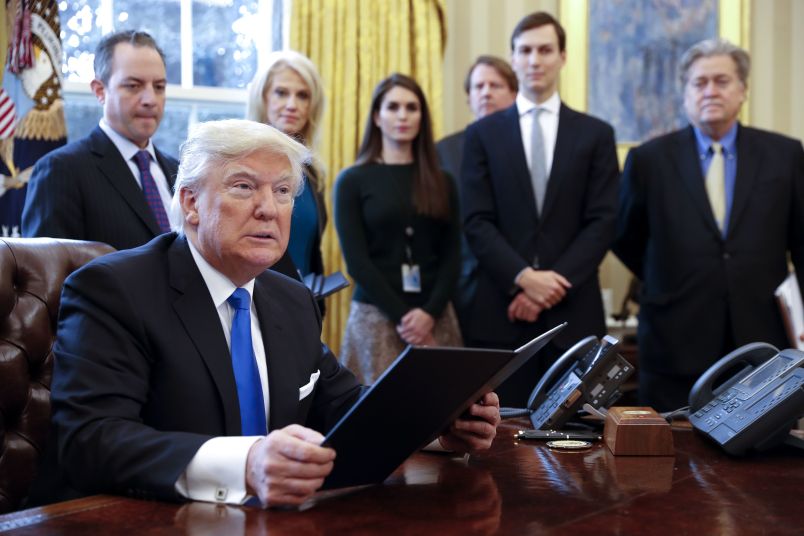I collect pens, particularly fountain pens, and so I always watch closely when a President signs something with a pen. As far as I could tell, Donald Trump was using a A.T. Cross rollerball at his first signing ceremony. I couldn’t tell whether it was a Townsend or Century II. CNN has now confirmed that it was the latter. Trump’s pens may have been specially made for him in the United States, but most Cross pens, and as far as I know the Century II, are made in China.
Should Trump, then, have sought out a pen that is made in the United States? There are a few custom American pen makers, but none of the big companies that used to make American pens great manufacture pens in the United States. Some of them are not even based in the U.S. anymore. Or even exist.
America used to make the best pens. The leading companies were Sheaffer, Waterman, and Parker. I consider the Parker 51, which Parker produced during the ’40s and ’50s, and the Sheaffer PFM, which it produced during the 1950s, the best fountain pens ever — and many a pen collector would agree with me. But Sheaffer closed its original facility in Fort Madison, Iowa in March 2008. The next year, Parker, which had been bought by Newell Rubbermaid, closed its original factory in Janesville, Wisconsin, which is the center of Paul Ryan’s congressional district. Waterman is now a French company.
One might conclude that fountain pens, like toys or socks, are commodities that are appropriate for very low-wage mass production in Asia, but that’s not necessarily the case. Parker pens are now produced in France. And the three leading European brands, Pelikan, Lamy, and Montblanc, are produced in Germany and Switzerland. The Japanese company Namiki, which makes high quality fountain pens, has its factories in Japan. In my mind, and that of many pen collectors. Pelikan now makes the best pens.
If Americans had just failed at making pricey pens, then it wouldn’t be a big deal. But it applies to many a precision-made good. My hearing aid is made in Denmark. I looked up the six major hearing aid producers in the world. Three are based in Denmark, one in Germany, one in Switzerland, and one (the smallest) in the United States.
You can see the same problem with goods that are central to the economy. America is the second largest consumer of machine tools, which are the tools that produce goods in factories, but are only the sixth largest producer. We are behind China, Germany (which exports the most), Japan, South Korea, and Italy. Six of the top producers of solar panels are Chinese. The eighth and tenth largest are American.
Liberal critics of Trumpism make light of his pledge to revive American manufacturing. And as a way to create thousands and thousands of jobs, it probably is an empty promise, like his promise to replace Obamacare with a system that is cheaper and universal. Manufacturing is increasingly automated. But manufacturing produces tradable goods that can reduce our trade deficit; rates of profit are often higher than services and contribute to the economic surplus on which the government itself must run; and manufacturing can still produce a greater string of jobs — it has a high multiplier– than services. So there is a point to reviving manufacturing in America. Even of quality pens.






